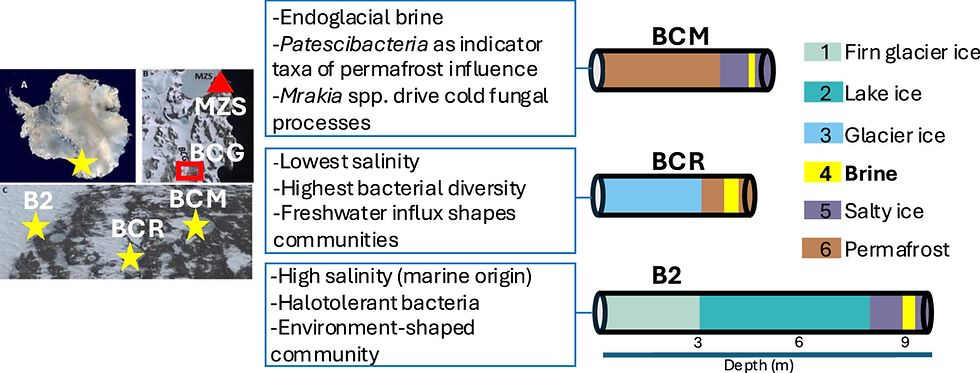Disaster Microbiology—a New Field of Study
- David Ojcius
- Aug 6, 2022
- 3 min read
Natural and human-made disasters can cause tremendous physical damage, societal change, and suffering. In addition to their effects on people, disasters have been shown to alter the microbial population in the area affected. Alterations for microbial populations can lead to new ecological interactions, with additional potentially adverse consequences for many species, including humans. Disaster-related stressors can be powerful forces for microbial selection. Studying microbial adaptation in disaster sites can reveal new biological processes, including mechanisms by which some microbes could become pathogenic and others could become beneficial (e.g., used for bioremediation).
ABSTRACT Natural and human-made disasters can cause tremendous physical damage, societal change, and suffering. In addition to their effects on people, disasters have been shown to alter the microbial population in the area affected. Alterations for microbial populations can lead to new ecological interactions, with additional potentially adverse consequences for many species, including humans. Disaster-related stressors can be powerful forces for microbial selection. Studying microbial adaptation in disaster sites can reveal new biological processes, including mechanisms by which some microbes could become pathogenic and others could become beneficial (e.g., used for bioremediation). Here we survey examples of how disasters have affected microbiology and suggest that the topic of “disaster microbiology” is itself a new field of study. Given the accelerating pace of human-caused climate change and the increasing encroachment of the natural word by human activities, it is likely that this area of research will become increasingly relevant to the broader field of microbiology. Since disaster microbiology is a broad term open to interpretation, we propose criteria for what phenomena fall under its scope. The basic premise is that there must be a disaster that causes a change in the environment, which then causes an alteration to microbes (either a physical or biological adaptation), and that this adaptation must have additional ramifications.
Disaster Microbiology A disaster is defined broadly by Merriam-Webster as “a sudden event, such as an accident or a natural catastrophe, that causes great damage or loss of life,” (1) and can be caused by natural hazards (geophysical, hydrological, climatological, meteorological, or biological) or human-made hazards (conflicts, industrial accidents, transportation accidents, environmental degradation, or pollution), according to the International Federation of Red Cross and Red Crescent (2). Disasters impose immense technological, physical, financial, psychological, and health burdens upon the people affected and threaten our infrastructure around the globe. The term “disaster microbiology” was used in a recent report by the American Society for Microbiology on the effects of climate change on microbes and defined as a “proposed field of study focused on the microbial impacts from severe storms and natural disasters” (3), which inspired this article. In the history of science, scientific fields emerge when communities form with common scientific interests (4). Formal establishment of a field also creates an environment in which there is “creation of cohesive communities, preservation of information, [and] establishment of normative standards” (4). At this time, the field of disaster microbiology is not yet recognized as a distinct entity, but in this article, we argue that sufficient knowledge and research exist to create a new tent that would house these efforts and promote their further development and collaboration across currently separated disciplines. The focus of this article is anthropocentric simply because we know most about human consequences and because as humans we are necessarily concerned about human well-being, but it is important to note that any disaster also affects all other species living in the area.
The emergence of the field of disaster microbiology would allow microbiologists, epidemiologists, ecologists, environmental engineers, and infectious disease and other experts to organize their research around the shared goal of mitigating microbial consequences from such events and to learn the basic science that accompanies microbial adaptation to catastrophe. This field would seek to understand how natural and artificial disasters drive adaptation of environmental microbes and change microbial interactions with humans, and how both combined have implications for human health. As public health researchers and disaster preparedness organizations make recommendations for plans to treat and avoid disaster-incited infectious disease outbreaks, disaster microbiology could inform them on how microbes respond to disaster and which are at highest risk of causing outbreaks depending on disaster type, geography, and socioeconomic conditions.
Read more at:








Comments